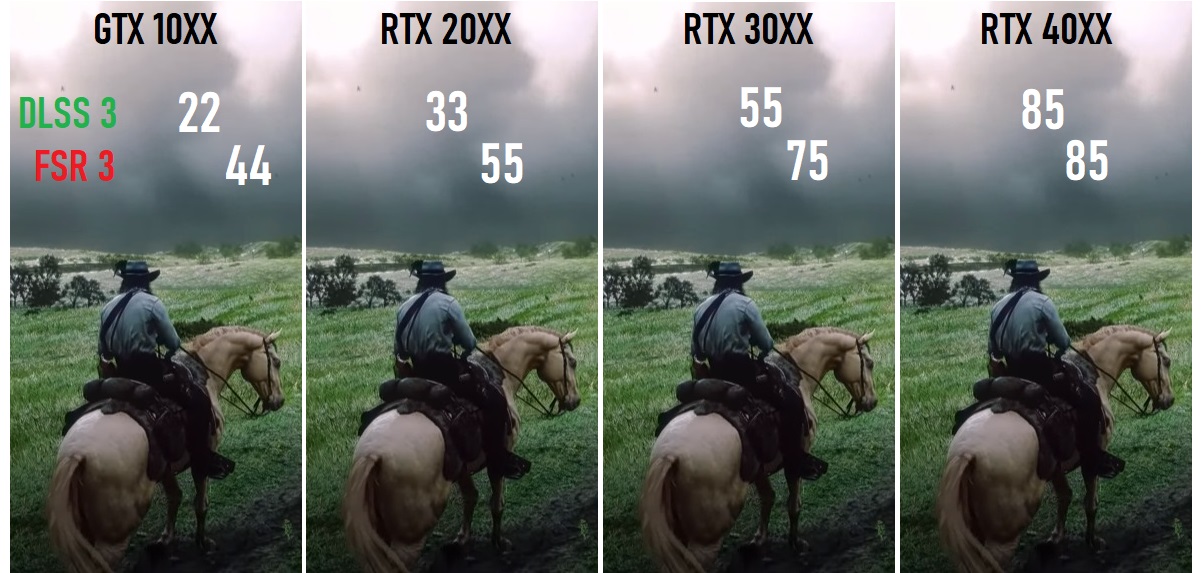With the release of FSR 3.1, AMD aims to elevate gaming performance and visual quality. But how does it stack up against its predecessor, FSR 2.2, and competitors like DLSS and XCSS? Let’s dive into a detailed comparison to answer your burning questions.
Key Takeaways
- FSR 3.1 Improvements: Noticeable reduction in artifacts and better handling of low-resolution upscaling.
- Ghosting Issues: Persistent ghosting remains a concern, suggesting a trade-off for improved stability.
- Comparative Performance: DLSS still leads in overall quality, but FSR 3.1 narrows the gap slightly.
Is FSR 3.1 Better Than FSR 2.2?
Yes, but with caveats. FSR 3.1 shows clear improvements over FSR 2.2 in several areas:
- Artifact Reduction: The notorious shimmering and sizzling details in motion have been toned down, making the latest version more visually stable.
- Low-Resolution Upscaling: Games like Ratchet and Clank now look significantly better in performance mode, though you can still notice the difference compared to quality mode.
However, this upgrade isn’t without its trade-offs. Ghosting remains an issue, particularly during fast motion scenes against detailed backgrounds. This was observed across various games and engines, hinting at a broader issue.
FSR 3.1 vs. XCSS: Which to Use?
Choosing between FSR 3.1 and XCSS depends heavily on your GPU and the game you’re playing:
- AMD GPUs: FSR typically outperforms XCSS on AMD hardware. For instance, in Horizon Forbidden West, FSR offers better quality at comparable performance settings.
- Artifact Preferences: Each upscaler has its quirks. FSR 3.1 may have more ghosting, but XCSS can introduce jaggies and low-resolution artifacts. Your choice might hinge on which imperfections you find less distracting.
In games like Ghost of Tsushima, FSR excels in stability and sharpness, albeit with more ghosting, while XCSS may deliver a smoother experience at the cost of some detail.
DLSS, FSR, and XCSS: The Competitive Landscape
DLSS remains the top choice for overall quality. With version 3.7, DLSS continues to lead, providing the fewest artifacts and the best image quality across various games. Nvidia’s continuous improvements keep it ahead of the competition.
FSR 3.1: Though it narrows the gap, FSR 3.1 still lags behind DLSS. It’s more usable now, especially at lower quality settings, but the ghosting issues need resolution.
XCSS: Intel’s upscaling technology serves as a viable option for non-Nvidia GPUs, but it can’t match DLSS’s performance.
Conclusion: A Step Forward, But Not a Giant Leap
FSR 3.1 represents a significant improvement over FSR 2.2, making it a more viable option for gamers, especially those without Nvidia GPUs. However, AMD still has work to do to match DLSS’s superior quality and performance. The upscaling ecosystem has improved, and having both FSR and XCSS available gives gamers more flexibility.
What to Watch For
- Future Updates: AMD should continue refining FSR to address ghosting and further close the gap with DLSS.
- Developer Integration: Wider adoption of these technologies across different games and developers will provide more comprehensive comparisons and help fine-tune performance.
For now, if you’re running an AMD GPU, leveraging the best available upscaling technology—whether FSR or XCSS—can significantly enhance your gaming experience. The competition among these technologies ultimately benefits gamers, pushing each to improve continuously.






